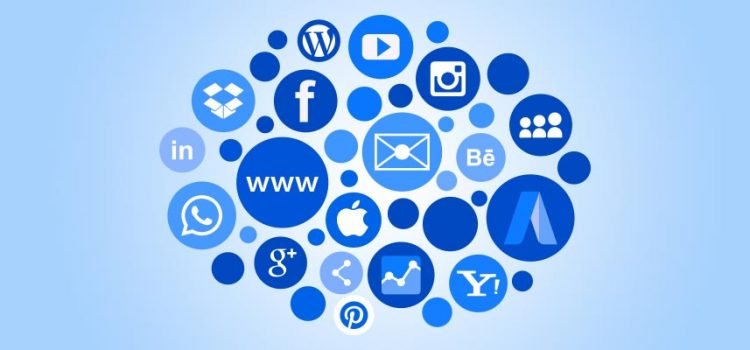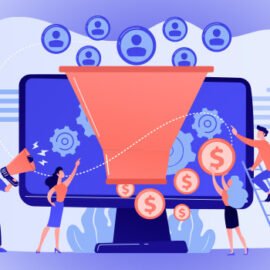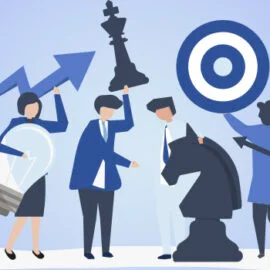
|
Getting your Trinity Audio player ready... |
Imagine trying to sell your product without any idea of where your customers are. It would be like shouting in the middle of the desert hoping someone will hear you. In the digital world, digital marketing channels These are precisely the paths that connect your brand to the right people at the right time. And knowing how to use them strategically is what differentiates a common business from a sales machine.
But what exactly are these channels? How do you choose the best ones for your company? And, most importantly, how do you make them bring real results — and not just empty likes?
If these questions have crossed your mind, keep reading this article. Let's dive into this universe together and discover how digital channels can boost your business.
What are digital marketing channels?
Digital marketing channels are the means by which a brand communicates with its audience in the online environment. Therefore, they act as bridges between your company and the consumer, from the first contact to loyalty.
These channels are not just advertising platforms — they represent strategic points of interaction, influence and conversion. And, when used well, they become true sales accelerators.
“Digital marketing channels are the means used by companies to attract, convert and engage with audiences in the online environment.”
Unlike traditional channels (such as TV, radio or leaflet distribution), digital channels offer something that has completely changed the game: real-time measurability. This means you can test, adjust and scale with surgical precision.
Top 6 Digital Marketing Channels (and How to Use Them Right)
Direct traffic
This is the most “organic” channel of all. The visitor types your website address directly into their browser. This indicates that they are already familiar with your brand — which is usually the result of good branding work.
So, if you want to increase direct traffic, start by making your brand memorable. To do this, have an easy-to-remember domain, a striking visual identity and a strong presence on social media. Direct traffic is, in practice, a thermometer of your brand’s strength.
“Direct traffic is when a visitor types in your website address manually, indicating that they already know your brand.”
Organic traffic
The darling of those who think long-term. Here, the visitor arrives at your site after completing a Google search (or other search engine) and click on a non-paid link.
This channel relies heavily on a solid SEO (Search Engine Optimization) strategy. And no, SEO isn’t just about “stuffing” your text with keywords. It’s about understanding the search intent, create valuable content, optimize the website structure, improve the user experience and gain backlinks.
With the arrival of AI in search engines (such as Google SGE and Bing with ChatGPT), the search for direct answers and reliable content has intensified. Today, whoever answers best, appears more.
Referral traffic
This traffic occurs when other websites link to yours, generating access from links on blogs, news portals, partnerships or influencers. It is a valuable channel, both for SEO and brand authority.
To gain referral traffic, produce content that deserves to be shared. Make guest posts, participate in relevant forums, create strategic partnerships and encourage others cite their solutions.
“Referral traffic happens when your website receives visits from links on other websites.”
Paid media
Want to speed up results? Then this is where investing in paid media comes in. Platforms like Google Ads, Meta Ads (Facebook and Instagram), LinkedIn Ads and Pinterest Ads, among others, allow you to reach your audience with precision, personalization and speed.
The great advantage of paid media is the ability to segment. This means you can choose age, location, interests, behaviors and even purchase intent. But be careful: without a good sales funnel, you'll just be throwing money away.
And remember: it’s not just about traffic, it’s about conversion. Therefore, a campaign only works well when it’s connected to a relevant offer, an effective landing page and content that educates the lead.
E-mail marketing
They say that the e-mail marketing died. But whoever says that probably never used this channel strategically. Email marketing continues to be one of the channels with the highest ROI (Return on Investment) of digital marketing — and the only channel that is truly “yours”.
It is through this that you nurture leads, create real connections and follow the prospect until the moment of purchase (and beyond). Using automation, you can create intelligent flows that educate, segment and convert.
“Email marketing is the channel with the highest return on investment in digital marketing when executed well.”
Social networks (Social)
This is perhaps the most visible channel, as well as the most misunderstood. Being on social media is not just about posting pretty pictures or dancing. It’s about talking to your audience, creating a community, generating value and, yes, selling.
Furthermore, each network has its own particularities. Instagram is visual. LinkedIn is corporate. TikTok is agile and creative. X (formerly Twitter) is opinionated. And Facebook? It still works for specific niches, especially for advertising.
Therefore, understanding where your persona is and how they consume content is key to extracting real results from networks.
Other emerging (and powerful) channels
In addition to the six main channels, digital marketing has evolved. Today, there are other channels that deserve special attention:
- Influencer Marketing: collaboration with content creators to generate authority and engagement.
- WhatsApp Business/API: direct, intimate and conversational channel, increasingly integrated into sales and support strategies.
- Push and SMS notifications: Great for urgent communications and promotions.
- Podcasts and audio platforms: growing space to position authority and educational content.
How to analyze and measure the performance of each channel?
Here’s the trick: there’s no point in being on every channel if you don’t know what’s working. You need to measure everything. Fortunately, there are tools out there to make your life easier:
- GA4 (Google Analytics 4): Provides comprehensive insights into website traffic and user behavior.
- Google Search Console: ideal for measuring organic performance.
- Meta Business Suite: centralizes Instagram and Facebook data, both paid and organic.
- CRM and automation platforms: such as RD Station, Mautic, ActiveCampaign or Hubspot, which connect behavior with real sales opportunities.
- UTMs and custom dashboards (like in Google Looker Studio): to cross-reference data and understand the complete journey.
“Analyzing digital marketing channels involves cross-referencing data from different platforms to identify which strategies generate the most ROI.”
Digital Marketing Channels and the Inbound Strategy
On the other hand, there is no point in knowing all the channels if they work in isolation. The result is when you integrate all these points of contact into a fluid and personalized journey for your audience.
This is where the inbound marketing comes into play. It combines content, SEO, automation, social media, ads and emails into a strategic framework that attracts, converts, nurtures and builds loyalty.
With inbound, you create an ecosystem of channels working together — not just to sell, but to educate, build trust, and delight.
Conclusion: Are you using the right channels?
Being present in the digital world is no longer an option — it’s a matter of survival. But being everywhere at once, without a strategy, will only leave you tired and frustrated. So the real power lies in using the right channels, in the right way, for the right audience.
So, start with the basics: understand your goals, know your persona, choose the channels that make the most sense for your business model and, most importantly, closely monitor the data.
Digital marketing gives you the freedom to test, fail, adjust, and succeed. But to do that, you need to stop shooting in all directions and start building smartly.
So, which channel are you going to strengthen today?
Did you like this post and want to know more about digital marketing channels? How about downloading our free e-Book, How to Measure and Optimize Digital Marketing Channels?

Marcel Castilho is a specialist in digital marketing, neuromarketing, neuroscience, mindfulness and positive psychology. In addition to being an advertiser, he also has a Master's degree in Neurolinguistic Programming. He is the founder, owner and CEO of Vero Contentes and the offline agency VeroCom.





Comments are closed.